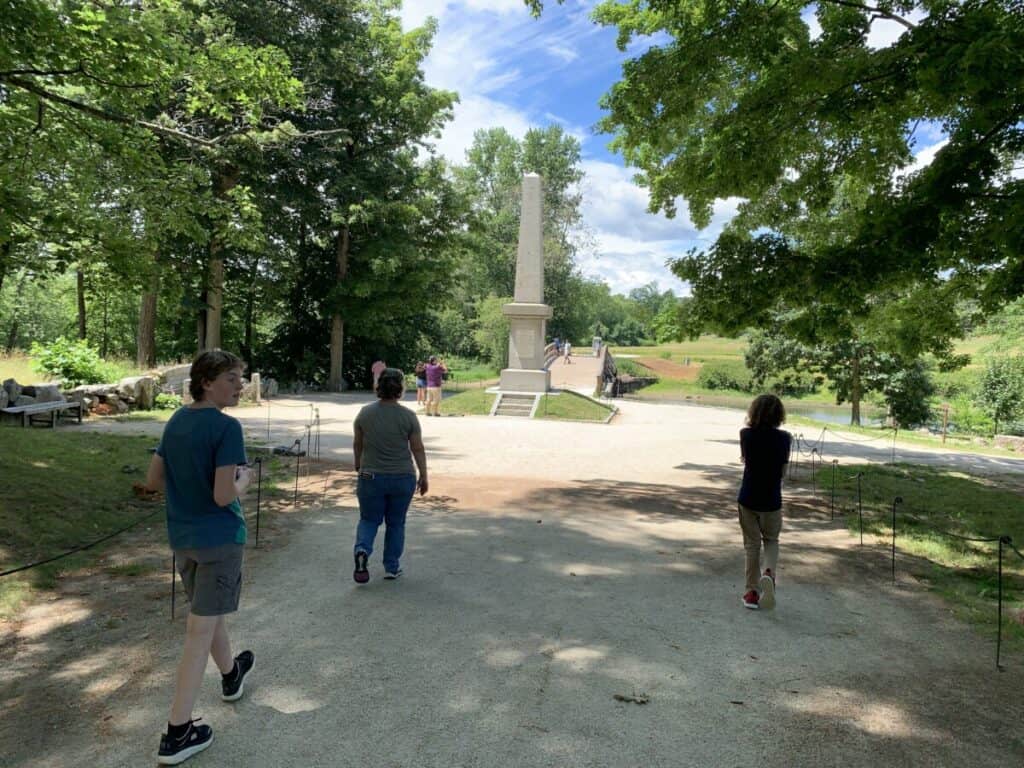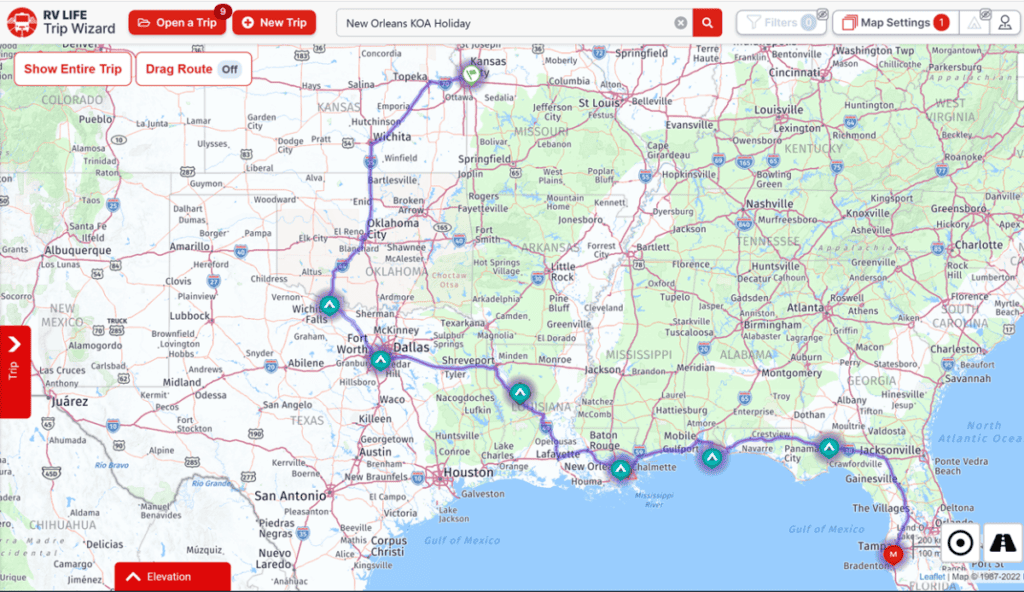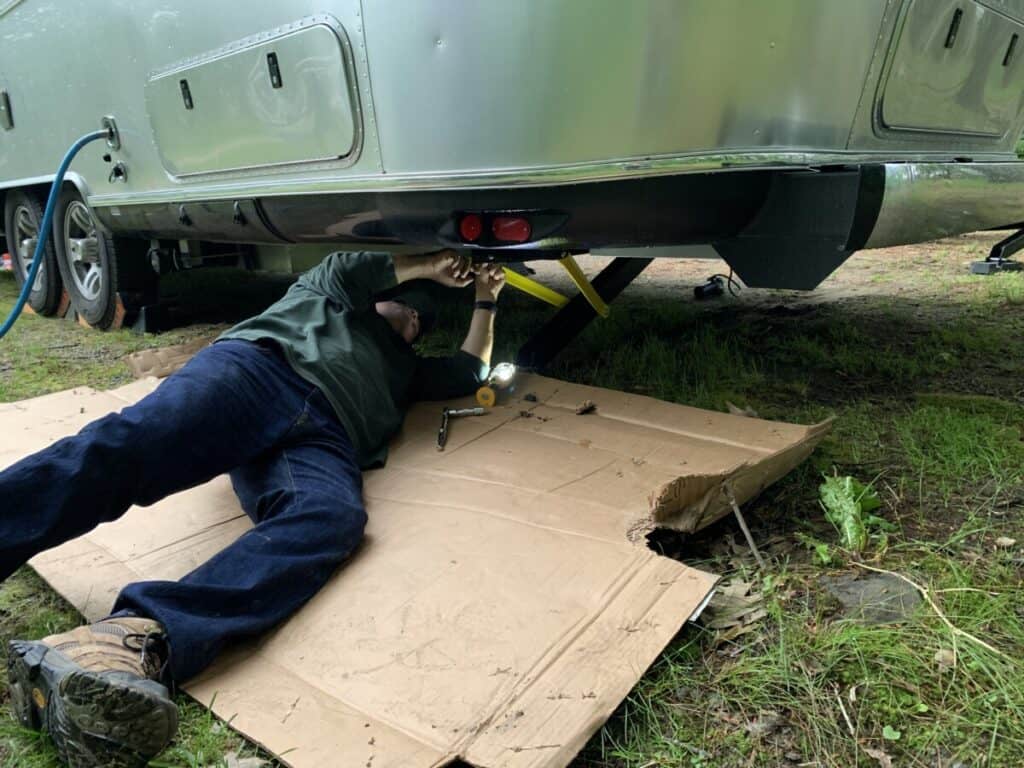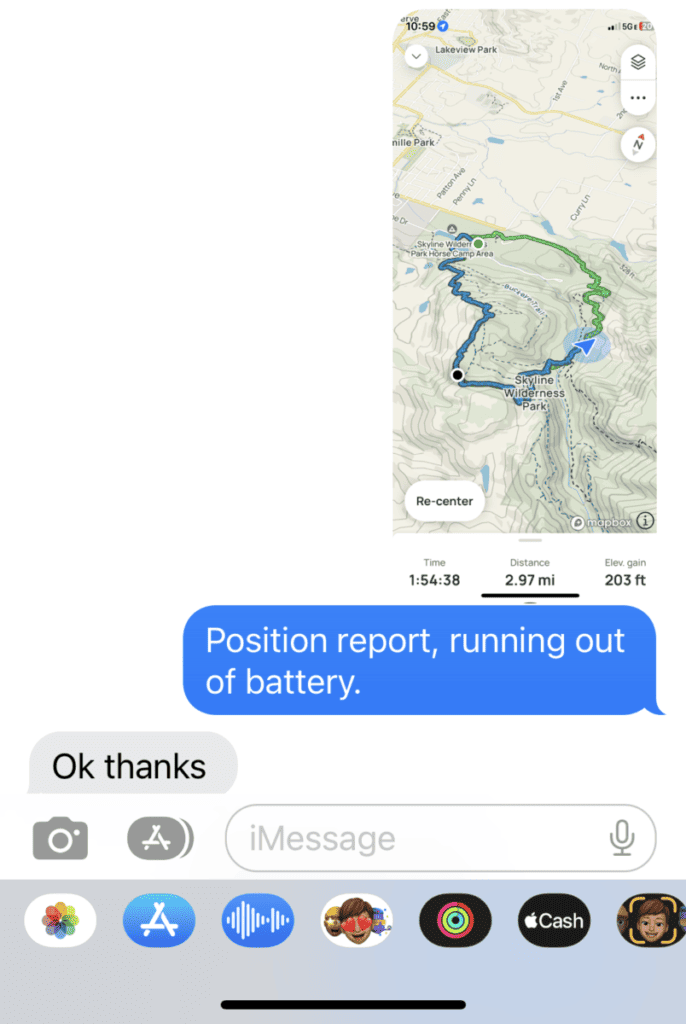
Before you go, check this out!
We have lots more on the site to show you. You've only seen one page. Check out this post which is one of the most popular of all time.
I remember learning to camp as a young buck in a church based scouting type of program. We were taught that we needed three things on each camping trip to be comfortable: food, water, and shelter.

At that point in my life, telephones were connected to a wall and all we could do with them was have a conversation with someone else. The internet was ten years away and computers took up an entire classroom. If we wanted to find the answer to a question, we looked in the library.
A lot has changed for us since then. The evolution of technology and our increasing ability to work and maintain relationships remotely is giving rise to two interconnected trends: RVing and mobile connectivity.
Traveling in an RV allows us to explore new destinations, or revisit some of our favorites. Toay, we can embrace the nomadic lifestyle and combine the freedom of the open road with the comforts of home. The comforts of home include reliable connectivity.
The growing popularity of RVing with reliable mobile connectivity has opened a fresh set of possibilities and redefined what it means to live a fulfilling and balanced life on the move. We could not enjoy the same level of freedom, opportunity, and balance on the road without mobile Wi-Fi. In fact, mobile Wi-Fi has become so essential that it is increasingly regarded as the fourth necessity for RVers.
Here are six compelling reasons why Wi-Fi has is a necessity for staying connected on the road:
Having the freedom to learn and work remotely is relatively new to many of us and the benefits opened up a new world for us.
We have more flexibility. Even if there is a requirement to maintain regular office hours, we can still integrate our work with our travel plans and personal preferences. Flexibility provides a better work-life balance and can give us more time to build life-long memories with our friends and family.
Remote learning and work give RVers the freedom to travel extensively, working from different locations and immersing themselves in new experiences and cultures. I can’t imagine a better way to expose younger family members to history than taking them to where it happened and letting them walk the grounds. I imagine that they will never forget it.

My wife and I often marvel at the landscapes we pass through and imagine what it must have been like to travel in an era with none of the creature comforts that we take for granted today, like a 70-mph speed limit and air conditioning. We think about the families that said goodbye to sons and daughters, brothers, and sisters as they migrated from Europe to America or from the east coast to the west. For many, there was no expectation that they would ever see their family and friends again because travel was so difficult and dangerous.
We can travel farther, in comfort, and safely today. We can work from just about anywhere and communicate with peers in the office as if we were on site. I have a regularly scheduled video call with a friend in Guadalajara that helps keep the friendship going. We couldn’t do any of that from the road without reliable mobile Wi-Fi.
Having the technology with us to access the internet plays a vital role in trip planning and navigation. With that access comes an almost limitless pool of information and resources to optimize our travel experiences.

We rely on the internet to research and plan our travel routes. Online platforms and websites provide valuable glances into scenic routes, points of interest, and attractions along the way. By accessing travel blogs like this one, forums, and review sites, RVers can gather recommendations, insider tips, and firsthand experiences from other travelers, enabling them to curate an itinerary that aligns with their interests and preferences. Mobile Wi-Fi is an essential tool for searching the internet to find suitable campgrounds or RV parks along the route. Travelers can search the net to utilize club and affiliate directories, review websites, and identify campgrounds that offer the amenities and services required for the trip, such as full hookups or no-hookups, pet-friendly spaces, and recreational facilities. Mobile Wi-Fi enables RVers to discover hidden gems, off-the-beaten-path destinations, and unique experiences that may have otherwise remained unknown.

Online reviews and ratings provide a reliable (but not perfect) peek into the quality and suitability of each campground, helping RVers make informed decisions about where to stay. Also, the ability to access campground websites or contact them online allows RVers to check availability, make reservations, buy tour tickets, and receive important updates or notifications about their stay.
Mobile Wi-Fi gives RVers access to real-time weather conditions or forecasts that are helpful in trip planning and navigation. With mobile Wi-Fi, RVers can access weather websites, apps, or online weather services to monitor forecasts, severe weather alerts, and road conditions.
This information enables us to plan our travel days accordingly and informs decisions about adjusting routes or staying put in a campground during inclement weather. In an article I wrote earlier about preparing for a trip, I included a section on planning around weather. You can find that article here.
When on the road, online maps and navigation systems are indispensable tools for RVers. Digital maps allow RVers to navigate unfamiliar routes more easily. GPS navigation systems designed for RVs offer specific features like height and weight restrictions, low clearance warnings, and RV-friendly routes that contribute to safe and worry-free travels.
Online mapping and navigation resources used for trip planning are essential for RVers as we rely on them to navigate to new destinations along unfamiliar routes, avoid road hazards, and steer clear of areas unsuitable for their RV’s dimensions. For this, mobile internet access and Wi-Fi are a necessity.

I imagine setting up at a campsite and sitting outside under the shade with something to drink and little else to do but watch the wind blow left to right or right to left. Sometimes, my wife and I will watch campfire TV or simply watch the clouds drift by. But we can’t sit outside and do nothing all day every day, can we. We need entertainment. We need something to do.
Online entertainment meets that need in the RVing lifestyle. It offers RVers a means to relax, unwind, and enjoy our leisure time while on the road. With a Wi-Fi connection to the internet, RVers can access their favorite music and video streaming platforms. They can find and download the next book in their favorite series or download their favorite author’s newest release.
RVers will have some downtime while the kids are taking a nap, in the evenings, during rest days, or rainy weather. During these moments, we can turn to an extensive library of content online to catch up on our favorite TV series, discover new movies, or listen to their preferred artists and playlists.

Mobile Wi-Fi connections to our favorite online entertainment platforms add a touch of familiarity and convenience to the RVing experience. It provides access to entertainment, especially when the traditional options like cable TV or physical media may not be as accessible or convenient during travel.
The internet offers RVers a ton of online entertainment, ranging from movies and TV shows to music streaming platforms. It adds an extra layer of enjoyment and relaxation to the RVing experience, providing a form of entertainment that can be tailored to personal preferences and enjoyed during downtime, enhancing the overall quality of life on the road. Mobile Wi-Fi is an essential component for tapping into that resource from the campsite.
The internet provides RVers with an extensive and diverse library of information at the end of a good search query. RVers have a surplus of information available online from blogs and travel websites, forums, and social media groups. RVers can tap into the experiences and lessons learned shared by fellow travelers. We can find information about RV maintenance and rely on that information to stumble through DYI repairs even if we are not handy. We can be inspired by others’ trips, discover useful camping hacks, learn new songs to be sung around a campfire, and much more. This global store of online information gives RVers invaluable insight and resources on-demand to enhance their overall RVing experience.

The internet seems saturated with resources for RVers that want to pursue their hobbies, explore their interests, and engage in continuous education while on the road. Online platforms provide access to virtual classes, webinars, and tutorials for various subjects, enabling RVers to acquire new skills or deepen their knowledge on any subject that interests them. Also, online communities and forums centered around hobbies like photography, cooking, or birdwatching allow RVers to connect with like-minded individuals, share experiences, and exchange valuable tips.
Mobile Wi-Fi connectivity to the internet forces open a world of possibilities for personal growth, enrichment, and community-building, regardless of the RVers’ physical location.
I’ll start this with a story…
I am accustomed to filing flight plans when flying and I filed float plans when I had a boat and took it out on the lake or river. I wasn’t as consistent with letting someone know where I was going and how long I would be out on hikes. But it paid off once.
My wife had to travel for work to Pittsburgh, and I found myself alone in Napa Valley, California during perfect weather. My wife and I hiked part of a trail a few days before she left, and I decided to hike the full route while she was gone. The trail was rated “moderate” because there were long stretches of steep inclines and declines and parts of the trail were very rocky. Because we hiked part of the trail earlier, I knew to take my walking sticks and extra precautions. So, I texted my wife before I started down the path to let her know where I was and how long I expected it to take. I asked her to fire a flare for me if I didn’t check in before a set time.
I was three miles in to a four and a half mile walk and slowly making my way downhill when my left foot slipped and went straight out in front of me. My right knee buckled as I fell backwards. I landed on my back with my right foot pinned between the rocky trail and the seat of my pants. It hurt.
I rolled slowly onto my left side to free my leg, straightened it, and thought for a moment about where I hurt and how badly. I thought that a fractured femur, ripped thigh muscles, and torn ligaments around my knee were possibilities. I laid there for a few minutes to assess myself and thought about how glad I was that I shared my hiking plan.
I was using an online hiking map with GPS positioning and sent a pic with my location to my wife about 15 minutes earlier so, I was confident that if I needed help, rescuers would know where to start looking.

After I assessed my right leg and knee and decided that nothing was obviously broken or torn, I got up slowly and limped down the hill a mile and a half to the end of the trail. As I walked, the pain in my thigh began to subside and by the time I reached the end of the trail, I was not hurting as much, I was limping less, and I was confident that there were no serious or permanent injuries.
I think about how different that story would be if I had more serious injuries and did not have online access to relay my plan, send position reports, or to call for help if needed.
Being able to quickly communicate with emergency services is essential. Having a connection allows RVers to make emergency calls or send text messages to friends or family, police, fire departments, or medical services.
The internet grants access to information that can be crucial during emergencies. RVers can use their connected devices to access up-to-date information about weather, road closures, evacuation orders, or any other relevant updates. This information can inform our decisions about safety and appropriate actions to take.
In non-emergency situations, we may need to get help from others RVers in the vicinity or friends and family who can provide support or guidance. With internet connectivity, we can reach out to our networks through phone calls, messaging apps, or social media platforms. We can ask for help, update others with our current status, and coordinate necessary aid.
Having Wi-Fi access to the internet while RVing makes us better prepared for an emergency. It enables RVers to stay connected, access vital information, and communicate swiftly with emergency services and support networks.
The three necessities are food, water, and shelter. For RVers, we can argue that the three necessities are fuel, fun, and freedom. Either way, mobile Wi-Fi connections to the internet are for most of us, the fourth necessity.
RVers need to stay connected to the internet through a mobile Wi-Fi connection because it is how we work remotely, stay connected with family and friends, access vital trip planning and navigation information, enjoy online entertainment and resources while on the road, and handle emergency situations.
Mobile Wi-Fi has become an essential tool for RVers, providing the connectivity necessary for convenience and a balanced lifestyle while capitalizing on the freedom offered by the RVing lifestyle.
Our dependence on mobile Wi-Fi requires an investment in reliable equipment and a healthy understanding of the hardware options, configurations, and data plans available to get the most out of the technology. In my next article, I’ll describe our set up and why it works for us. You can read that article here.
NomadicNeighborhood is a participant in the Amazon Services LLC Associates Program, an affiliate advertising program designed to provide a means for sites to earn advertising fees by advertising and linking to Amazon.com. We also participate in other affiliate programs which compensate us for referring traffic.
How to Empty a Composting Toilet: Legal considerations and more
Composting toilets divert liquid and solid waste into separate tanks, and each must be emptied independently. Liquid waste is dumped into dump stations, vault toilets, or flush toilets. Solid...
Empty a Black Tank: 16 Steps That Include a Test and Preconditioning
[wpcode id="2133"] When I first started RVing, it took me close to an hour to empty the black and gray tank. I was learning and didn’t want to make a mess, so I took my time. As I gained more...